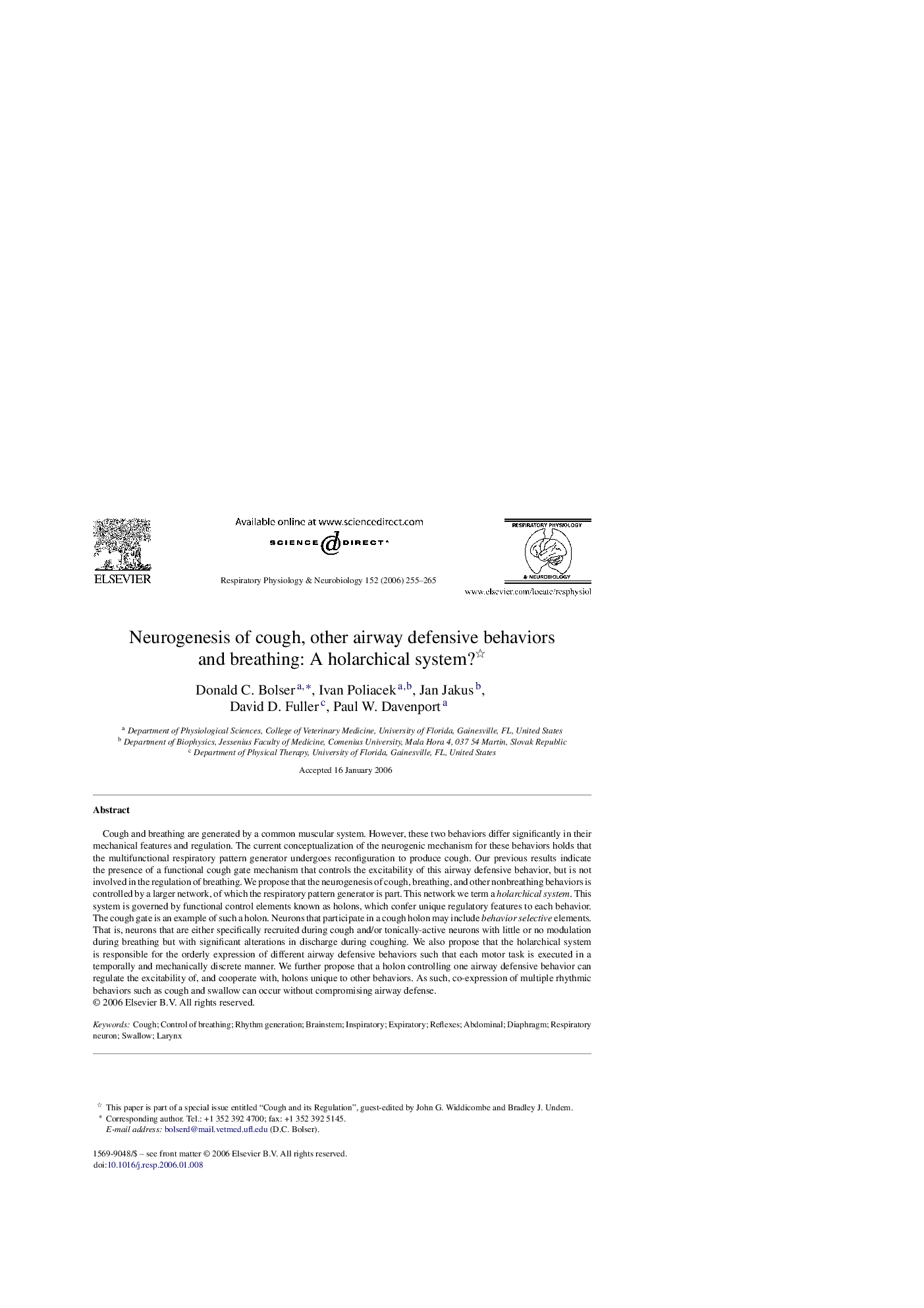| Article ID | Journal | Published Year | Pages | File Type |
|---|---|---|---|---|
| 2848569 | Respiratory Physiology & Neurobiology | 2006 | 11 Pages |
Cough and breathing are generated by a common muscular system. However, these two behaviors differ significantly in their mechanical features and regulation. The current conceptualization of the neurogenic mechanism for these behaviors holds that the multifunctional respiratory pattern generator undergoes reconfiguration to produce cough. Our previous results indicate the presence of a functional cough gate mechanism that controls the excitability of this airway defensive behavior, but is not involved in the regulation of breathing. We propose that the neurogenesis of cough, breathing, and other nonbreathing behaviors is controlled by a larger network, of which the respiratory pattern generator is part. This network we term a holarchical system. This system is governed by functional control elements known as holons, which confer unique regulatory features to each behavior. The cough gate is an example of such a holon. Neurons that participate in a cough holon may include behavior selective elements. That is, neurons that are either specifically recruited during cough and/or tonically-active neurons with little or no modulation during breathing but with significant alterations in discharge during coughing. We also propose that the holarchical system is responsible for the orderly expression of different airway defensive behaviors such that each motor task is executed in a temporally and mechanically discrete manner. We further propose that a holon controlling one airway defensive behavior can regulate the excitability of, and cooperate with, holons unique to other behaviors. As such, co-expression of multiple rhythmic behaviors such as cough and swallow can occur without compromising airway defense.
